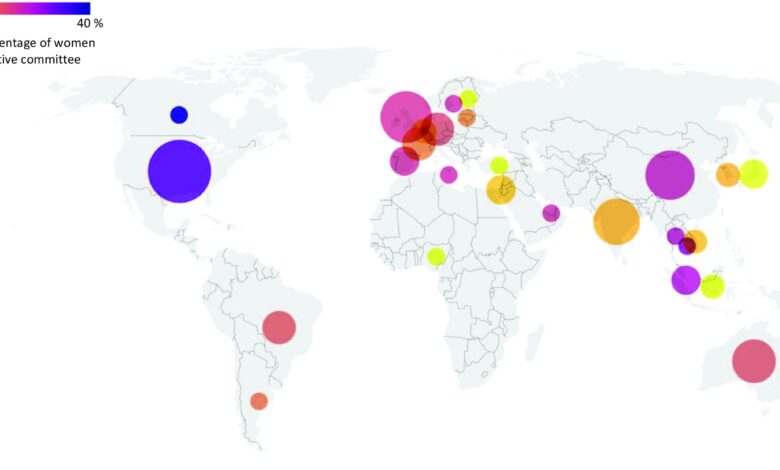Fintech has a gender problem—here’s why you should care

× close
Fintech (financial technology) is everywhere. It’s the catch-all term for technology-enabled financial services innovation.
Even if you haven’t heard of fintech, you’re probably using it for payments, banking or investments. Klarna? ClearPay? Revolut? Monzo? They’re all part of an industry that attracted a staggering US$51.2 billion (£40.5 billion) of investment globally in 2023.
However, while fintech is flooded with money, it is marked by an absence of women, particularly in leadership roles. Our research, which was published on March 5, reveals the striking underrepresentation of women guiding this booming industry.
Women account for just 4% of CEOs, only 18% of executive committee members, and a mere 7.7% of entrepreneurs within fintech. There is not a single woman on the executive leadership team of the well-known fintech company Revolut.
Fintech sits at the intersection of three sectors: finance, technology and entrepreneurship. Gender inequalities in each of these combine to form what we call a “triple glass ceiling” in the fintech industry. The longstanding male dominance, continued privileging of masculinity, and rigid gender stereotypes in each of these sectors hinder meaningful progress and change in fintech.
So, where are all the women?
The sexist culture still apparent within financial services has been brought into fintech. Our research, which involved interviewing female and male fintech professionals, uncovers stories of recruiters being reluctant to hire women because of assumptions they would get married, have children, and be less committed to the business.
Several interviewees noted that women typically work harder and push more to gain the same result as their male peers. However, ideas that get dismissed when suggested by a woman commonly gain credence when offered by a man. We found that the performance of masculinity, not the quality of the work or idea, is what tends to get valued.
The masculine language in fintech job descriptions—requiring applicants to be a “hunter” and “execute” on strategies—reduces the pool of female candidates. And men are more likely to be hired since they tend to fit the masculine characteristics sought after.
Networking can be a powerful way of climbing the career ladder in fintech. It’s not what you know but who. But networking itself is a male-dominated game. Women are often excluded from networking since it typically occurs in informal spaces outside of core working hours. And who is more likely to have caring responsibilities? Women.
Deep-rooted stereotypes mean that girls and women are still not supported or encouraged to pursue science, technology, engineering and mathematics subjects at school. Thus, technology careers remain associated with men.
Only 1.5% of chief technology officers or chief information officers are women—a reflection of the technology glass ceiling. In comparison, 37% of chief marketing officers are women.
Startups also comprise the bulk of fintech, and this is where an entrepreneurial glass ceiling prevails. Few women attempt to access funding, and those who do are less successful than their male counterparts. For example, less than 2% of venture capital funding went to female-founded companies in Europe in 2023.
Research finds that the venture capital industry is led by men. Since people are more likely to relate to and fund entrepreneurs similar to themselves, male-led ventures are more successful.
Socially constructed gender differences, such as confidence, risk aversion and pitching style, also lead to gendered questioning and expectations of masculine behavior. Successful entrepreneurs have traditionally been male, leading to a male stereotype of entrepreneurship and entrepreneurial success.
What does this mean for you?
Fintech makes bold claims of disruption, inclusion and progression. And yet, on a very basic level, how can an industry innovate through sameness? If people build and develop products based on their own frustrations and day-to-day living, innovation can only truly be driven by diverse people with different backgrounds and experiences.
Despite all the hype, fintech is falling short. To recognize the needs of a diverse population, fintech needs more diversity of its producers. Otherwise, it contributes to inequality and wastes potential economic and social benefits.
Our findings should serve as an alarm call to those inside and outside of the industry. Most adults in the UK use fintech every day—even without knowing. If made aware of the gender inequalities in the industry, fintech users can be a voice for change.
Everyone is responsible. Creating a more inclusive and equitable workplace will only occur if the industry receives pressure from all sides. Shattering the triple glass ceiling represents an immense challenge, but we cannot be allowed to fail.



